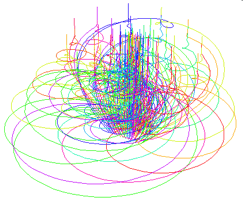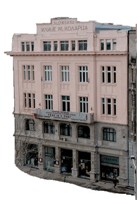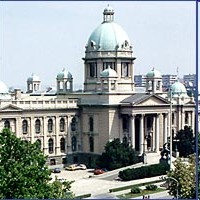 Belgrade
Belgrade
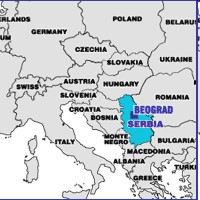 The climate in Belgrade is moderate continental, with an average daily temperature of 11.7oC.
The climate in Belgrade is moderate continental, with an average daily temperature of 11.7oC.
Belgrade is in the Central European Time (CET) zone (GMT+1 hour). Summer time counting lasts from end of March until end of October (GMT+2 hour).
The official monetary unit is dinar (CSD), but EURO will do as well.
Belgrade area code for domestic calls is 011, and for international calls it is ++381-11.
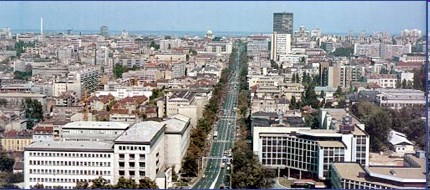
![]()
Belgrade is situated at the place where the Sava joins the Danube. Belgrade is one of the oldest cities in Europe and, beside Athens, the greatest urban whole of the Balkan Peninsula. The oldest archaeological artifacts from Belgrade area date back to the fifth millennium B.C. The members of a Celtic tribe founded Singidunum in the III century B.C., while the first record of the name Belgrade dates back to 878 A.D. During its long and tumultuous history, Belgrade has been conquered by 40 armies, and 38 times it has been raised up from the ashes.
Belgrade is the capital of Serbia, having around 1,6 million residents. In the field of traffic and transport, it is a city of the highest importance as a road and railway center, as a port for river and air traffic, and as a telecommunication center. It spreads over 3.6% of the territory of Serbia, and 15.8% of Serbian population lives in this city. Also, 31.2% of all employed workers in Serbia work in Belgrade.
Important economic and agricultural capacities are developed in Belgrade, especially metallurgy, metal-working industry and electronic industry, then commerce and banking. The free trade zone is located in the wider area of Belgrade, Smederevo and Pančevo, on the banks of the Danube river, covering 2,000 m2 of business space. Also, 30% of the national product of Serbia is made in Belgrade.
Belgrade is the capital of Serbian culture, education and science. It has the greatest concentration of institutions of national importance in the field of science and art. There is the Serbian Academy of Sciences and Arts, established in 1886 as the Serbian Royal Academy: the National Library of Serbia, established in 1832; the NationalMuseum, established in 1841 and the National Theatre, established in 1869. The city is also the seat of the BelgradeUniversity, founded in 1808 as the Great School, and the seat of the University of Art.
Belgrade has the status of a separate territorial unit in Serbia, having its own autonomous city government. Its territory is divided into 17 municipalities, having their own local governmental bodies.
Facts about Belgrade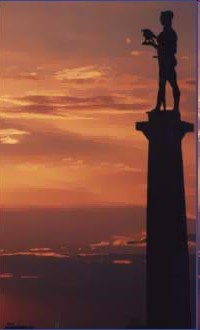 |
"The sky above Belgrade is wide and high, unstable but always beautiful; even during winter serenities with their icy splendour; even during summer storms when the whole of it turns into a single gloomy cloud which, driven by the mad wind, carries the rain mixed with the dust of panonian plain; even in spring when it seems that it also blooms, along with the ground; even in autumn when it grows heavy with the autumn stars in swarms. Always beautiful and rich, as a compensation to this strange town for everything that isn't there, and a consolation because of everything that shouldn't be there.
But the greatest splendour of that sky above Belgrade, that are the sunsets. In autumn and in summer, they are broad and bright like desert mirages, and in winter they are smothered by murky clouds and dark red hazes. And in every time of year frequently come the days when the flame of that sun setting in the plain, between the rivers beneath Belgrade, gets reflected way up in the high celestial dome, and it breaks there and pours down over the scattered town. Then, for a moment, the reddish tint of the sun paints even the remotest corners of Belgrade and reflects into the windows, even of those houses it otherwise poorly illuminates."
Written about Belgrade by: Ivo Andrić, Serbian Nobel prize laureate
This text is taken from www.beograd.org.yu.
Read also The New York times article about Belgrade like travel destination.
